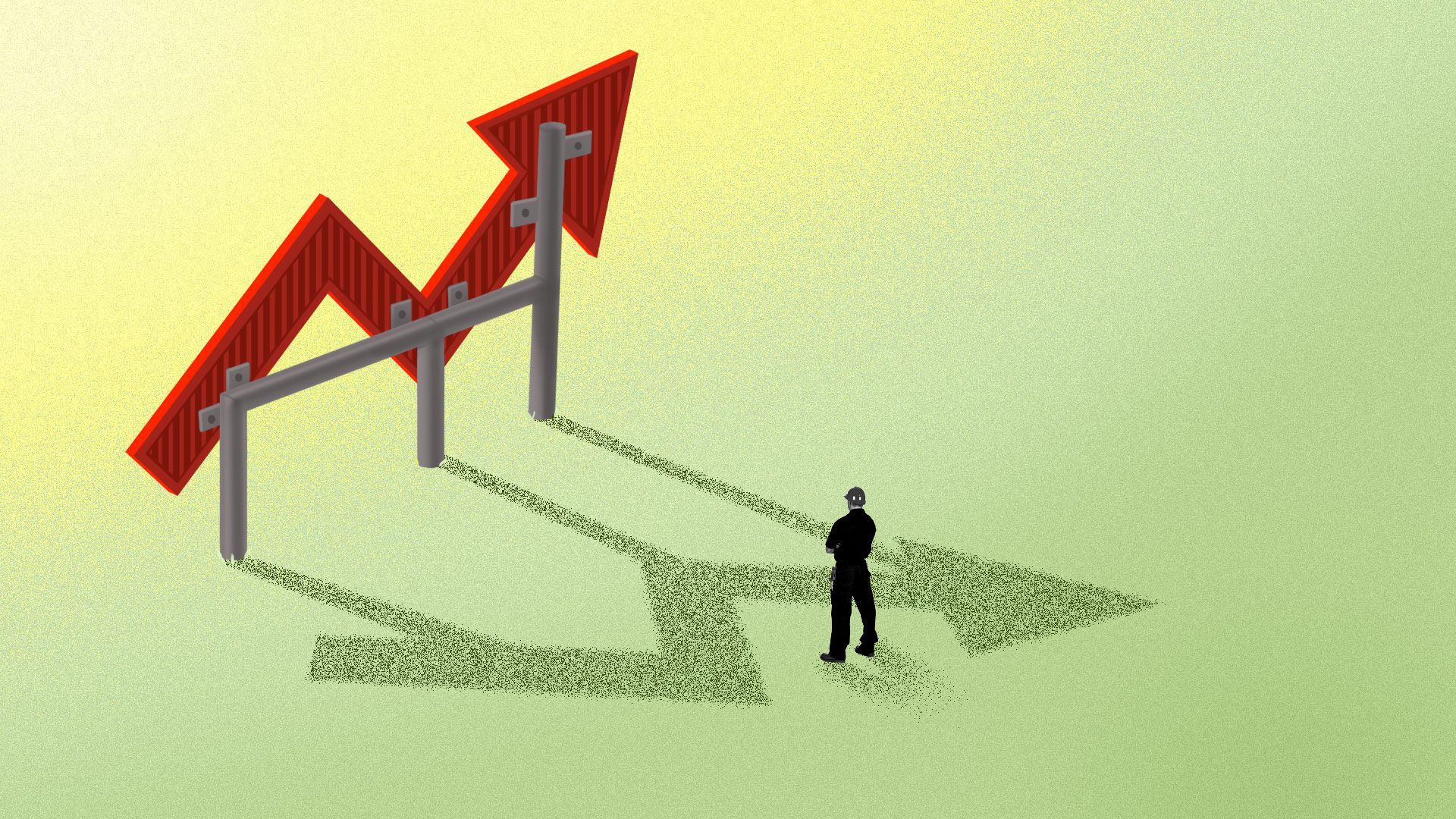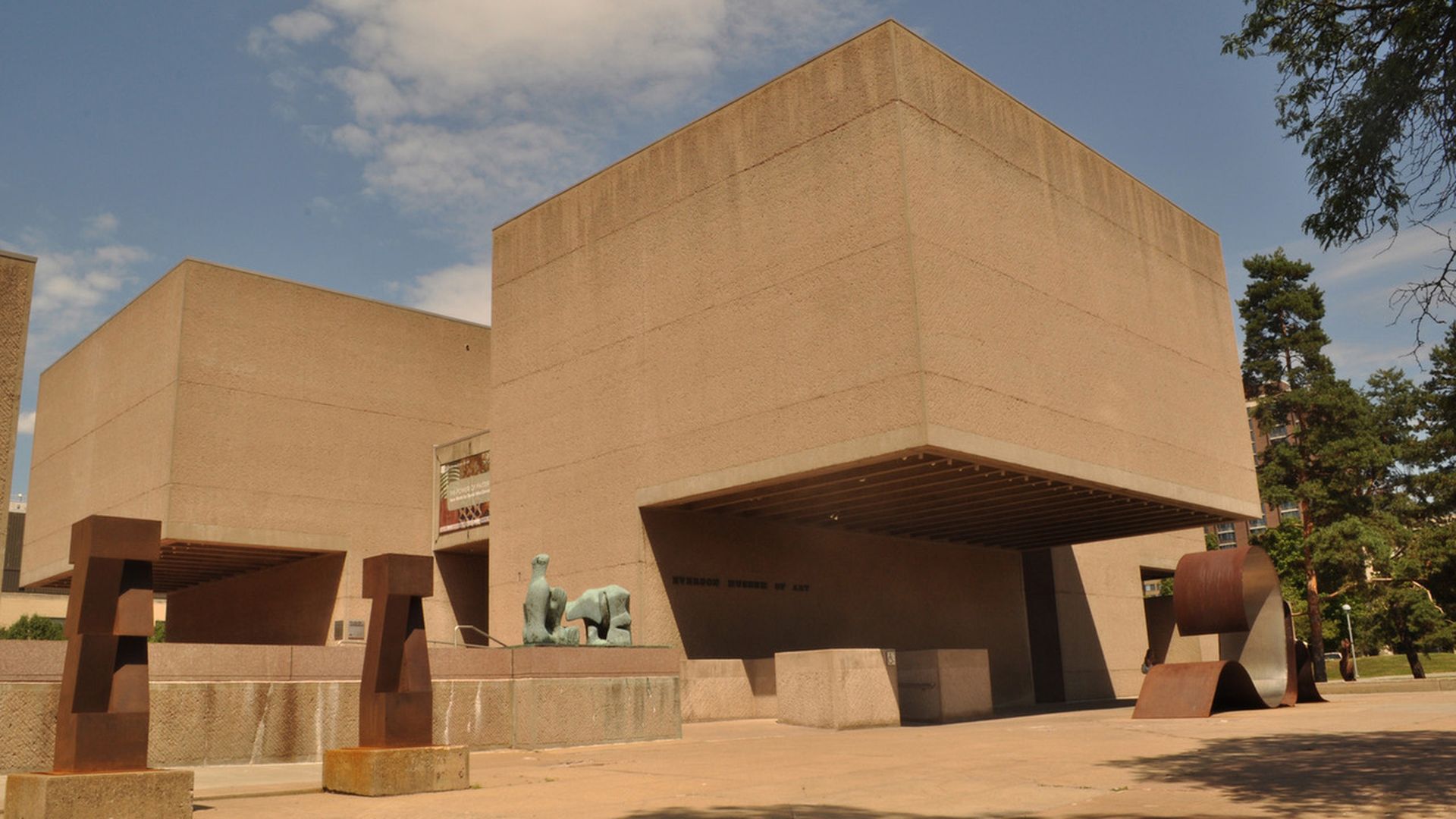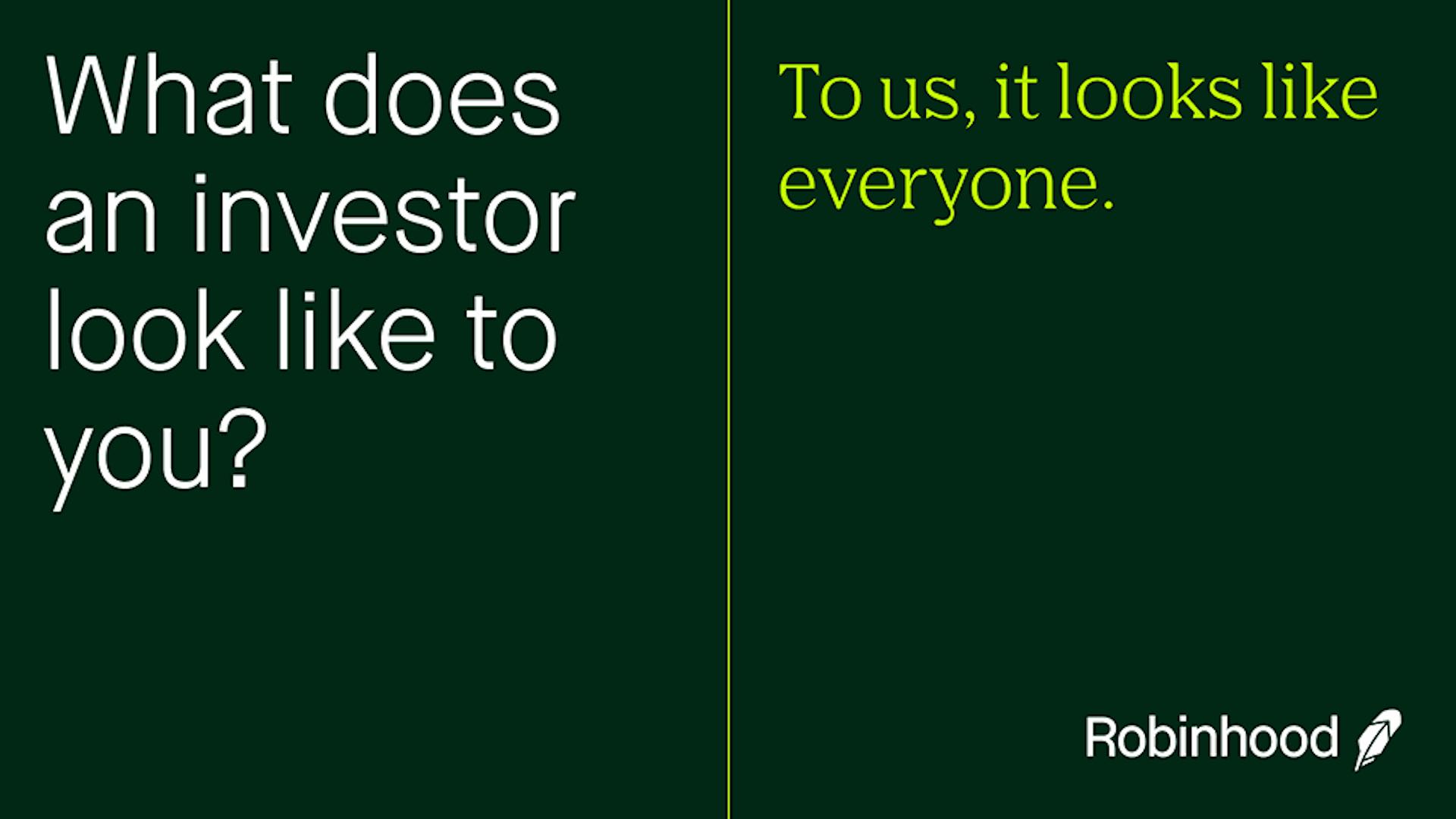| | | | | | | Presented By Robinhood | | | | Axios Capital | | By Felix Salmon ·Oct 22, 2020 | | File under "crime doesn't pay": This newsletter — which you can subscribe to here if this was forwarded to you — is always free. - In this week's issue I take a deep dive into white-collar crime. Why are prosecutors bringing so many cases right now? Why is the Google antitrust case so important? Is America really corrupt? What's going on with the banks, both old and new?
- All that and much more in the next 1,903 words, which should take you about 7 minutes to read.
- There was no space to talk about Quibi, a civic-minded scheme dreamed up by California power players Jeffrey Katzenberg and Meg Whitman to inject $1.4 billion of stimulus into the Hollywood economy during the part of the pandemic when it was needed most. Axios' Sara Fischer has all the details.
| | | | | | 1 big thing: The crackdown on white-collar crime |  | | | Illustration: Eniola Odetunde/Axios | | | | America has waited a decade for an aggressive government crackdown on white-collar crime. Now, just before the election, and in the middle of a bull market, it has arrived. Why it matters: When times are good, investors become more trusting and more greedy. That makes them more likely to put their money into fraudulent or criminal enterprises. - After a decade-long bull market, there is no shortage of those frauds to prosecute.
Driving the news: Just this week we've seen headlines about multi-billion dollar fines for Goldman Sachs and Purdue Pharma; the unveiling of a major antitrust case against Google; venture capitalist Elliott Broidy pleading guilty to accepting millions of fraudulently-obtained dollars; an allegation that software magnate Bob Brockman criminally evaded taxes on some $2 billion of income; and an admission of tax fraud by Robert Smith, the founder and CEO of Vista Equity Partners. Background: Historically, waves of prosecutions arrive after a market bubble bursts, rather than before an election. - In 2002, after the dot-com crash, there was a series of major prosecutions of white-collar crimes at high-flying companies like Enron, WorldCom, and Tyco.
- In 2009, after the financial crisis, a series of prosecutions and settlements targeted banks who engaged in massive fraud when they issued and securitized subprime mortgages.
- This year, the difference is that the crackdown is happening when markets are still healthy — but while prosecutors and defendants both have an incentive to settle before political appointees start leaving for their next jobs.
Be smart: When markets surge, investors lower their guard. They invest in fraudulent companies like Theranos and Wirecard, and glorify self-described rule-breakers like Uber's Travis Kalanick and Tesla's Elon Musk. - "There are always fraudsters out there who are trying to appeal to investors," says Yale Law professor Jonathan Macey. "The question becomes: How successful will they be. During times of irrational exuberance, we see upticks in the success rate that people have in prying people from their money."
How it works: "At any given time there exists an inventory of undiscovered embezzlement in — or more precisely not in — the country's business and banks," wrote the great economist J.K. Galbraith in 1929. "This inventory — it should perhaps be called the bezzle — amounts at any moment to many millions of dollars." - "It also varies in size with the business cycle. In good times people are relaxed, trusting, and money is plentiful ... The rate of embezzlement grows, the rate of discovery falls off, and the bezzle increases rapidly."
The bottom line: The greatest bull market in history has been accompanied by a predictably enormous degree of fraud and other illegal corporate behavior. That means rich pickings for politically-appointed U.S. attorneys on the lookout for ways to grab credit for cases before new appointees arrive in January. - Defendants, too, have every incentive to settle now. "Irrespective of politics, you don't want to deal with a new team," says Robert Driscoll, a former deputy assistant attorney general under George W. Bush who now works in private practice at McGlinchey.
|     | | | | | | 2. Google's day in the antitrust spotlight |  | | | Illustration: Lazaro Gamio/Axios | | | | The most far-reaching announcement of the week was the massive antitrust lawsuit alleging illegal monopolistic conduct at Google "over at least the last decade." - Further antitrust lawsuits against the search giant are forthcoming.
Google's consumer tech peers Amazon, Apple and Facebook have also been accused of illegal anticompetitive behavior, in a world where soaring share prices justified and even glorified strategic aggression. - The four companies combined are now worth some $5.5 trillion. They helped to inspire Facebook board member Peter Thiel's book "Zero to One."
- "Tomorrow's champions will not win by competing ruthlessly," he writes. "They will escape competition altogether."
The case against Google is important because major non-merger monopoly cases against U.S. companies are incredibly rare. In the modern era (since 1980) there has really only been one such case — the suit brought against Microsoft in 1998. Be smart: This case will stretch on for many years, but shareholders can be forgiven for being sanguine. - "Rumors about a suit have been hanging over Google for a long time, says Joseph Bonner, a Google analyst at Argus Research. "The fact of the complaint is less scary than the rumor was."
- The big risk, says Bonner, is that "the government enjoins Google from the anticompetitive behavior they're alleging. But it's so far out in the future that from a shareholder's perspective, it's not something I can deal with at the moment."
The bottom line: The Google case could usher in a new era of antitrust enforcement, especially if Joe Biden wins the presidential election. But antitrust enforcement isn't always bad for the share price of the companies in question — not even when they are forcibly broken up. |     | | | | | | 3. American corruption |  The Elliott Broidy case is a classic example of corrupt behavior, where a friend of the president allegedly sold his influence in the White House to a corrupt foreign financier for $9 million. - This kind of corruption is classified by University of Michigan political scientist Yuen Yuen Ang as "access money" — funneling cash to government officials in return for favors.
Why it matters: Access money is the dominant form of corruption in both China and the U.S., according to Ang's research. How it works: For her new book — "China's Gilded Age," published in July — Ang measured corruption in four categories. Petty theft and speed money are low-level bribes, while high-level corruption is split between access money and grand theft, where businesses pay large bribes to the government. - China scores 7.6 out of a maximum 10 on the prevalence of access money; the U.S. scores 6.9 out of 10. By comparison, Singapore scores 3.7 and Ghana scores 5.8.
- Of note: Not all corruption is illegal. The American institutionalization of lobbying and revolving-door activities is corrupt, notes Ang, even if it isn't criminal.
Go deeper: For a prime example of how access money works in practice, check out a recent N.Y. Times investigation which found hundreds of examples of businesses attempting to curry favor with President Trump — often with remarkable success — by spending money at his properties. |     | | | | | | A message from Robinhood | | This is the future of investing | | |  | | | | Robinhood believes the financial system should be built to work for everyone. That's why they're providing: - Free, digestible financial news.
- Simple and direct educational resources.
- An app that helps you invest at your own pace, on your own terms.
Find out more. | | | | | | 4. Wall Street in the crosshairs |  | | | Illustration: Aïda Amer/Axios | | | | Wall Street seems to be a particular target at the moment. - Driving the news: Goldman Sachs will agree to pay the U.S. Department of Justice $2.9 billion, and is paying Hong Kong regulators $350 million, on top of $3.9 billion it paid to the government of Malaysia, to atone for its role in facilitating the $6.5 billion 1MDB fraud.
- Other banks have also faced huge fines. JPMorgan paid $920 million to settle charges of market manipulation and Citigroup paid $400 million as a consequence of having continued lax oversight over its own operations.
Between the lines: The U.S. government cares about the stability of the financial system, and tends to fine banks only when they can afford to pay. That's a big reason why the fines in the wake of the financial crisis stretched on for almost a decade. - It's also the main reason why Deutsche Bank saw its own mortgage-selling fine reduced from $14 billion to $7.2 billion in 2016: The German bank simply couldn't afford the larger sum.
The bottom line: Fraud at major banks extends all the way down to low-level employees. Both JPMorgan and Wells Fargo have fired staffers for stealing money from the government's small-business emergency loan programs. |     | | | | | | 5. How challenger banks try to make money |  | | | Illustration: Aïda Amer/Axios | | | | No one likes the feeling that their bank is ripping them off, or likes to read headlines about their bank's corporate malfeasance. - When big banks make money from predatory behavior, that causes consumers to seek out alternatives, in the form of challenger "neobanks."
- The catch: Challenger banks need to make money too — and they have many fewer ways of doing so.
Why it matters: Most consumer banks make their profit by levying much-hated fees or by charging very high interest on loan products like credit cards. They also have extremely low borrowing costs. Neobanks tend to avoid lending, charge no fees, and have very high borrowing costs. So they've started looking for other revenue sources. Driving the news: Aspiration, a socially-responsible U.S. neobank, this week launched Plant Your Change, a service that rounds up to the nearest dollar credit and debit card purchases; the scheme works on cards issued by any bank. The project promises to plant one tree for every purchase. - Between the lines: While a lot of the revenue from Plant Your Change does go to nonprofit organizations, Plant Your Change itself is a for-profit affiliate of Aspiration.
- "If at some point along the way of planting hundreds of millions of trees we do make a profit, that will still be tiny sliver of what oil companies and big banks make every year by pillaging the planet," says Andrei Cherny, Aspiration's CEO. "I don't think anyone will begrudge us that."
- "In fact, proving that there can be a consumer financial institution that is sustainable from both an environmental and business perspective would be a pretty big victory."
How it works: The U.K.'s biggest neobank, Monzo, is rolling out a metal card that costs £180 ($235) per year, in return for phone and travel insurance and higher deposit interest rates. - The idea is to find products that consumers willingly pay for.
The bottom line: As Accenture analyst Tom Merry told Forbes, many consumers still don't trust neobanks. They hold only small sums on deposit and consider the big legacy banks to be safer and more secure. - Neobanks like Chime — which recently raised $485 million at a $14.5 billion valuation — don't have an urgent financial need for profits. But competition is fierce and customer acquisition costs are high.
- The biggest challenge in the sector is to find a model where customers willingly pay enough money that the bank can swiftly recoup those costs.
|     | | | | | | 6. HR chiefs' hiring plans |  U.S. companies anticipate hiring more people if Biden wins in November than if Trump does — a finding in line with Moody's estimates that a Biden administration would create millions more jobs, especially in infrastructure and clean energy. |     | | | | | | 7. Coming up: Third-quarter GDP |  | | | Illustration: Lazaro Gamio/Axios | | | | The biggest economic report between now and the election comes at 8:30am next Thursday, writes Axios' Courtenay Brown. The third-quarter GDP figure will certainly come in with a very high headline number. Why it matters: The headline figure is annualized, which is why the second-quarter figure was so large — GDP fell at a 32% rate. - By the numbers: The economy likely grew at an annualized 30% rate — though estimates range from 17% to 39%, according to FactSet.
- If the consensus is right, that would mean (in non-annualized terms) the economy grew 6.9% in Q3 compared to the prior quarter.
Be smart: If you shrink by a certain percentage and then grow by the same percentage, you still end up smaller than you started. Even the most optimistic growth forecasts still put U.S. GDP significantly below where it started the year. |     | | | | | | 8. Building of the week: Everson Museum, Syracuse |  | | | Photo via Everson Museum of Art | | | | I.M. Pei's Everson Museum of Art, in Syracuse, New York, was designed in 1961, although it was only completed in 1968. As such, it has a claim to being the first brutalist art gallery. - It takes the form of four cantilevered boxes, containing nine different galleries, arranged around an atrium sculpture court.
- The bronze Henry Moore sculpture by the front entrance was incorporated into the design of the building. After 52 New York winters it needs a new patina, which will cost about $25,000.
That money will come out of the $12 million that the museum raised by selling a 1946 Pollock painting at auction this month. The money will go into an endowment, the income from which will be used to buy art by a diverse set of artists. - The museum's community is 50% people of color, says executive director Elizabeth Dunbar, so this sale — which came with the blessing of the estate of the original donor — allows her to build a collection that better reflects its location.
- The museum is in the historic 15th Ward of the city, a Black neighborhood razed in the name of "urban renewal" to create a civic plaza.
|     | | | | | | A message from Robinhood | | This is the future of investing | | |  | | | | Robinhood believes the financial system should be built to work for everyone. That's why they're providing: - Free, digestible financial news.
- Simple and direct educational resources.
- An app that helps you invest at your own pace, on your own terms.
Find out more. | | | | | | Axios thanks our partners for supporting our newsletters.
Sponsorship has no influence on editorial content. Axios, 3100 Clarendon Blvd, Suite 1300, Arlington VA 22201 | | | You received this email because you signed up for newsletters from Axios.
Change your preferences or unsubscribe here. | | | Was this email forwarded to you?
Sign up now to get Axios in your inbox. | | | | Follow Axios on social media:    | | | | | |












No comments:
Post a Comment